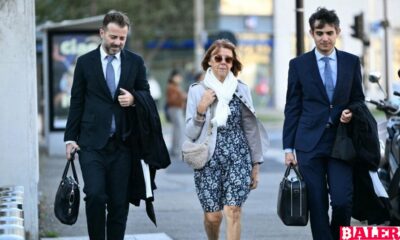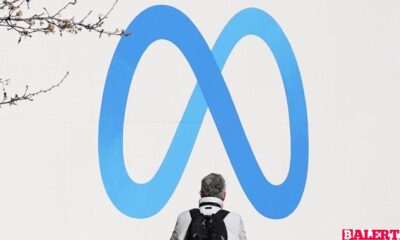Tech
Justin Sun’s New Ventures in the Crypto Space: SunPump and WBTC Custody
Explore Justin Sun’s latest ventures in the crypto realm with SunPump and WBTC Custody. Discover how these innovative projects aim to reshape the digital currency landscape and enhance security for investors.

Tron Founder Justin Sun Makes Waves with New Ventures
Justin Sun, the founder of Tron, has recently made headlines not just for his controversial reputation but also for his strategic moves in the crypto space. Described in a recent podcast episode as a “shameless” yet “shrewd” individual and “one of the smartest on-chain users, period,” Sun’s activities are generating significant attention. This week, he launched a new memecoin platform named SunPump and took a pivotal role in the custody of the $9 billion-plus Wrapped Bitcoin (WBTC) project alongside BitGo. This development is stirring interest in the competitive landscape of tokenizing Bitcoin for use in decentralized finance (DeFi) protocols on Ethereum and other blockchain networks.
This article is featured in the latest issue of The Protocol, our weekly newsletter exploring the technology behind cryptocurrency, one block at a time. Sign up here to receive it in your inbox every Wednesday.
Network News
The supply of Wrapped Bitcoin (orange) has fluctuated, alongside its market capitalization, as the price of the WBTC token closely tracks the notoriously volatile Bitcoin (Dune Analytics).
WRAPPERS DELIGHT: A significant shift is occurring in the business of tokenizing Bitcoin for the Ethereum blockchain. In 2019, the crypto custodian BitGo, in collaboration with two partner firms, introduced “Wrapped Bitcoin” – a mechanism for locking up Bitcoin and minting an equivalent token, WBTC, that could be utilized on Ethereum, a key destination for many crypto traders due to its status as the home of the largest decentralized finance (DeFi) protocols.
The WBTC project experienced rapid adoption, with its market capitalization soaring to approximately $16 billion by late 2021. However, it has since settled back to around $9 billion, still placing it among the top 20 cryptocurrencies. Notably, BitGo had been the sole custodian for the locked Bitcoin, raising concerns about potential risks associated with its centralized control.
In response to these concerns, BitGo announced last week its plan to transition WBTC to “multi-jurisdictional custody,” expanding operations into Hong Kong and Singapore. However, this move has prompted some industry observers to express apprehension about Justin Sun’s involvement in BiT Global, the custody firm now overseeing the locked Bitcoin. As noted by Nydig research head Greg Cipolaro, “The partnership has raised eyebrows among industry observers.”
In a tweet, Sun acknowledged the community’s concerns regarding his various projects, including WBTC, but asserted that his involvement is purely strategic. He emphasized that he does not control the private keys to the WBTC reserves and cannot access or move any Bitcoin reserves. BitGo CEO Mike Belshe reiterated this point during an X Spaces session, stating, “There is no single party that has the ability to mint or steal from the underlying treasury.”
Despite these reassurances, the decentralized stablecoin issuer MakerDAO, following a heated discussion on its forum, passed a motion on August 14 to eliminate its exposure to WBTC. The motion cited concerns that the new arrangement could “centralize too much control with BiT Global,” as reported by CoinDesk’s Sam Reynolds. Meanwhile, the DeFi protocol Aave has opted to continue using WBTC, according to CoinMetrics, but this transition has highlighted custodial and operational risks, leading to increased interest in permissionless alternatives.
- Potential alternatives include Threshold’s tBTC and a new option called dlcBTC, both of which have been prominent topics on the podcast circuit this past week.
- The U.S. crypto exchange Coinbase has hinted at the upcoming release of “cbBTC.”
- Crypto influencers on X have been promoting FBTC, another wrapped Bitcoin alternative that launched last month with support from the Mantle Network, as a viable solution to WBTC’s “centralization risks.”
Such developments indicate a rush to create alternative (and potentially decentralized) versions of wrapped Bitcoin, as highlighted by Galaxy Digital’s Gabe Parker in a newsletter. Tarun Chitra from Gauntlet noted on the Chopping Block podcast, “There’s going to be this mad rush to try to fill the gap.”
A broader perspective from Presto Research suggests that “Regardless of one’s view on Sun’s involvement, the attempt to decentralize a key piece of the DeFi infrastructure is likely a step in the right direction, despite its challenges.”
Elsewhere in the Crypto World
‘Wartime CEO’: Urbit’s Founder Returns in Shakeup at Moonshot Software Project
Urbit founder Curtis Yarvin (David Merfield/NASA, composite by Jesse Hamilton for CoinDesk)
In a surprising turn of events, Urbit, a unique and ambitious project aimed at reconstructing the entire internet computing stack, has reinstated its controversial founder Curtis Yarvin after a five-year absence. Although he holds no formal title, Yarvin is taking the lead on strategic decisions.
The board of the Urbit Foundation, which oversees core development, has terminated executive director Josh Lehman, with Christopher Colby stepping in as interim director while the board searches for a permanent replacement. The foundation faces financial challenges, leading to the abandonment of a fundraising proposal that aimed to create a new layer-2 blockchain on Ethereum. Instead, Yarvin’s strategy focuses on developing a utility token, potentially on Base, Coinbase’s layer-2 network.
Protocol Village
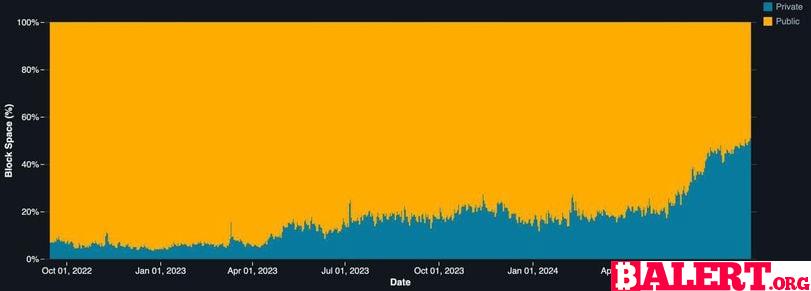
Top selections from the past week in our Protocol Village column, showcasing significant blockchain tech advancements and news.
- 1. GOAT Network: GOAT Network, branding itself as the “first Bitcoin layer 2 to share network ownership,” has released its economics beigepaper, outlining its approach to sustainable BTC yield. The executive summary states: “GOAT Network leverages decentralized sequencer, BitVM2, and zkVM technologies to create a platform that inherits the security of the BTC mainnet while catering to investors’ diverse financial needs.”
- 2. BitVM2: Robin Linus, the Bitcoin developer who made waves last year with a theoretical method for enhancing Bitcoin’s programmability, has introduced an improved version called “BitVM2.” This iteration boasts significant enhancements that could bring the concept closer to practical implementation, involving the use of cryptography to compress programs into sub-programs executable within Bitcoin transactions, according to a white paper published Thursday by Linus and five co-authors.
- 3. Linea: An EVM-equivalent layer-2 network developed by Ethereum creator Consensys, has partnered with Status, which positions itself as an “open-source decentralized communication super app.” Together, they plan to launch a parallel chain, with the Status team being the first contributors to utilize Linea’s code through new open-source repositories. This collaboration aims to enhance the entire ecosystem by ensuring client and prover diversity and supporting ongoing engineering efforts on Linea.
- 4. Babylon: The Bitcoin (BTC) staking platform Babylon, led by a Stanford University professor, is poised to enter the next phase of its development, with plans to launch the first phase of its main network on August 22. Babylon secured a $70 million funding round led by Paradigm earlier this year, and during this initial phase, BTC holders will be able to lock their tokens directly on the Bitcoin network.
- 5. Network3: Describing itself as a “protocol for decentralized, authenticated, anonymous, and reliable data transmission and computation,” has launched a physical dual mining machine called the N3 Edge, which supports both IoTeX and Network3 tokens.
Money Center
Fundraisings

Deals and Grants
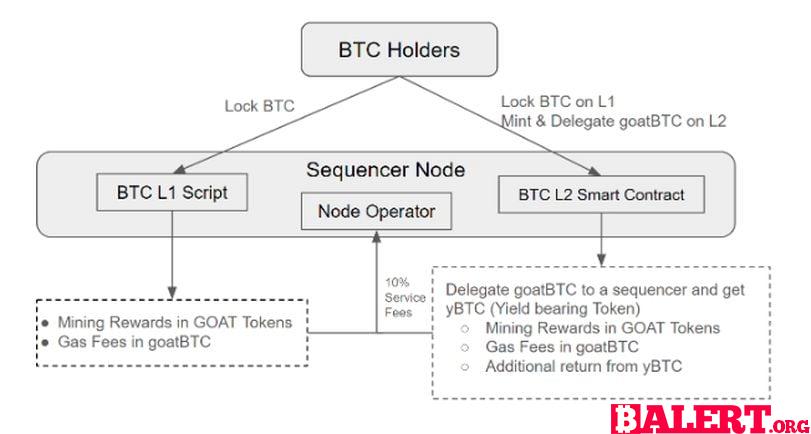
Data and Tokens
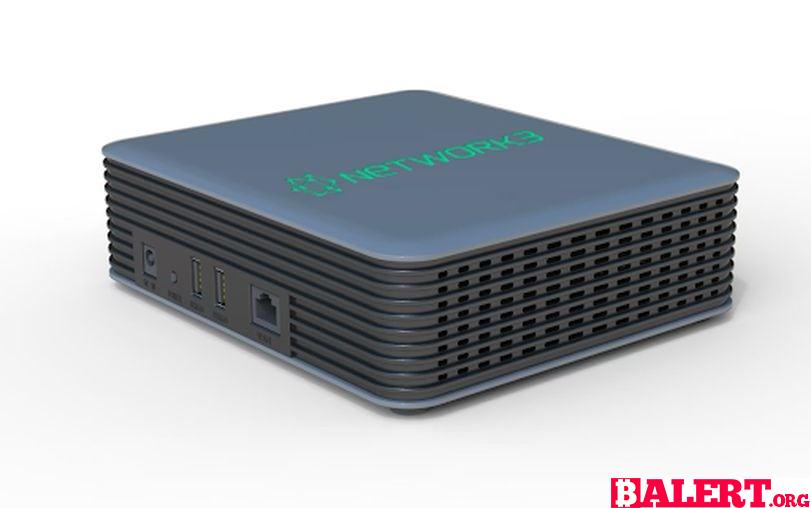
Regulatory, Policy, and Legal Updates
Dark Pools Dominate Ethereum as Private Transactions Surge

The percentage of private transactions on Ethereum, measured by total gas used, has increased since September 2022. (Blocknative)
A growing number of sophisticated Ethereum users are opting for private transactions on the blockchain, utilizing so-called dark pools to evade trading bots designed to front-run transactions, albeit at the cost of transparency typically associated with decentralized public networks. This shift is outlined in new research compiled by Blocknative, a company focused on minimizing the impact of MEV, or “maximal extractable value.” This refers to profits that can be extracted by rapid software bots that swiftly enter trades to capitalize on transactions waiting to be processed in the network’s public queue.
Currently, private transactions, which are sent directly to validators or block proposers instead of public mempools, comprise about half of all Ethereum transactions in terms of total gas usage—indicative of the computational resources needed to process these transactions. This percentage was around 7% in September 2022, coinciding with Ethereum’s transition to a proof-of-stake network, but has surged this year, rising from approximately 15% since the start of 2024.
Blocknative CEO Matt Cutler commented on this trend, stating, “You have a small number of actors who can see the private flow. Certain individuals can access information that others cannot, creating opportunities and advantages.”
For the full article, click here to read more from Bradley Keoun.
Calendar

Tech
Tesla Semi Fire: NTSB Preliminary Report Released
The NTSB’s preliminary report on the Tesla Semi fire has been released. This content includes important information about the details of the incident, the causes of the fire, and Tesla’s safety measures. Explore the impact on Tesla’s electric vehicles and its future steps.
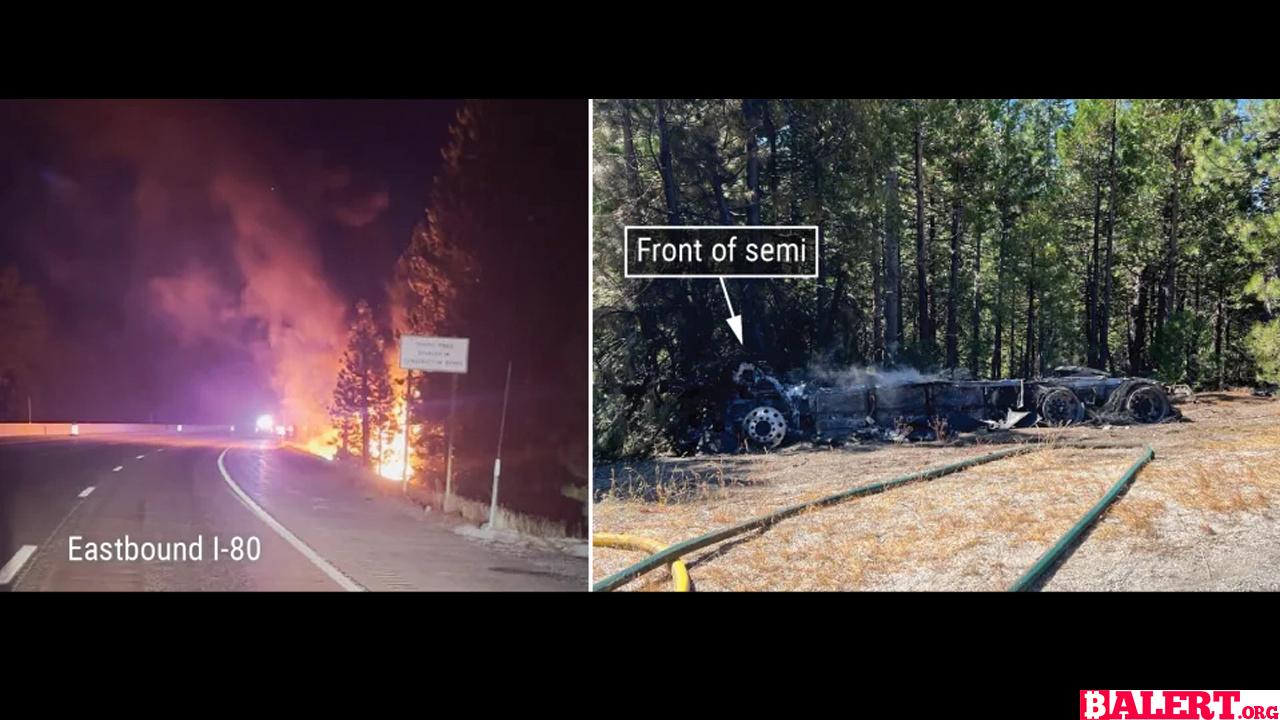
The National Transportation Safety Board (NTSB) released a preliminary report stating that a Tesla Semi electric truck in California required firefighters to use “50,000 gallons” (approximately 190,000 liters) of water to extinguish a roadside fire. Firefighting teams also deployed an aircraft to drop fire retardant on nearby areas as a precautionary measure to control the fire.
The accident occurred on August 19 at 3:13 AM local time on the I-80 highway east of Sacramento. The electric truck went off the road while navigating a curve, collided with a roadside boundary marker, and then struck a tree, coming to a stop. Fortunately, the driver was not injured in the accident; however, considering their health condition, they were taken to the hospital.
The Tesla Semi’s large 900 kWh battery caught fire upon impact, and toxic smoke began to spread during the fire. While the fire continued with temperatures reaching up to 538°C, firefighters worked intensively to cool the blaze with water. However, due to the fire’s effects, the vehicle continued to burn until late in the afternoon. Meanwhile, Tesla sent a technical expert to the scene regarding fire safety and high voltage hazards.
The highway reopened to traffic at 7:20 PM local time, 16 hours after the accident. The NTSB, as an organization that can only make recommendations and cannot enforce regulations, sent a team to the area for investigation purposes. This major accident raised several issues, including dangerously hot fires and toxic smoke, which will attract the attention of many international organizations.
The NTSB had previously stated in 2021 that fires in the batteries of electric vehicles pose serious risks to emergency response teams and that the guidelines provided by manufacturers for such fires are inadequate.
Tech
New Leaks and Features About the Samsung Galaxy S25 Ultra
Discover the latest leaks and features about the Samsung Galaxy S25 Ultra. Equipped with new technologies and advanced features, this smartphone elevates the user experience to a new level. Check it out for details!

New Leaks About Samsung Galaxy S25 Ultra
Samsung is expected to introduce the Galaxy S25 Ultra along with the Galaxy S25 series at the beginning of 2024, likely in January. Although no official announcement has been made yet, leaks regarding the upcoming flagship continue to spread rapidly on the internet. Notable leak source IceUniverse shared several new visuals of the Galaxy S25 Ultra in a post on the X platform. These visuals reveal the design differences between the Galaxy S25 Ultra and the Galaxy S24 Ultra.
One of the notable features in the leaked images of the Galaxy S25 Ultra is the rounded corners of the phone. In contrast, this year’s Galaxy S24 Ultra has quite sharp corners, which has led to feedback from some users indicating discomfort while holding the device. Previous leaks have suggested that the Galaxy S25 Ultra may be somewhat larger.
A tweet shared by IceUniverse: Galaxy S25 Ultra Image
According to leaks, the Galaxy S25 Ultra is expected to be thinner and lighter compared to previous models. In August, rumors emerged that the upcoming Galaxy S25 Ultra would be lighter than its competitors, with a weight of under 221 grams.
Another image featured in IceUniverse’s post shows close-ups of the sides of both next year’s expected flagship phone and Samsung’s current flagship. In this image, the side of the Galaxy S25 Ultra appears flatter with rounded corners. While these changes may not create a major revolution, they will generally positively affect the feel of the phone in hand.
Looking at other rumors about the Samsung Galaxy S25 Ultra, it is expected that the company will offer top-tier screen and camera upgrades next year. Additionally, there is a strong expectation that the satellite connection feature will also be introduced alongside the Galaxy S25.
Tech
iOS 18 Officially Released: Innovations and Features
iOS 18 has been officially released! This update, packed with new features and innovations, elevates the user experience to the next level. Check out our article for details and discover the new offerings of iOS 18!

iOS 18 Officially Released: Here Are the Innovations!
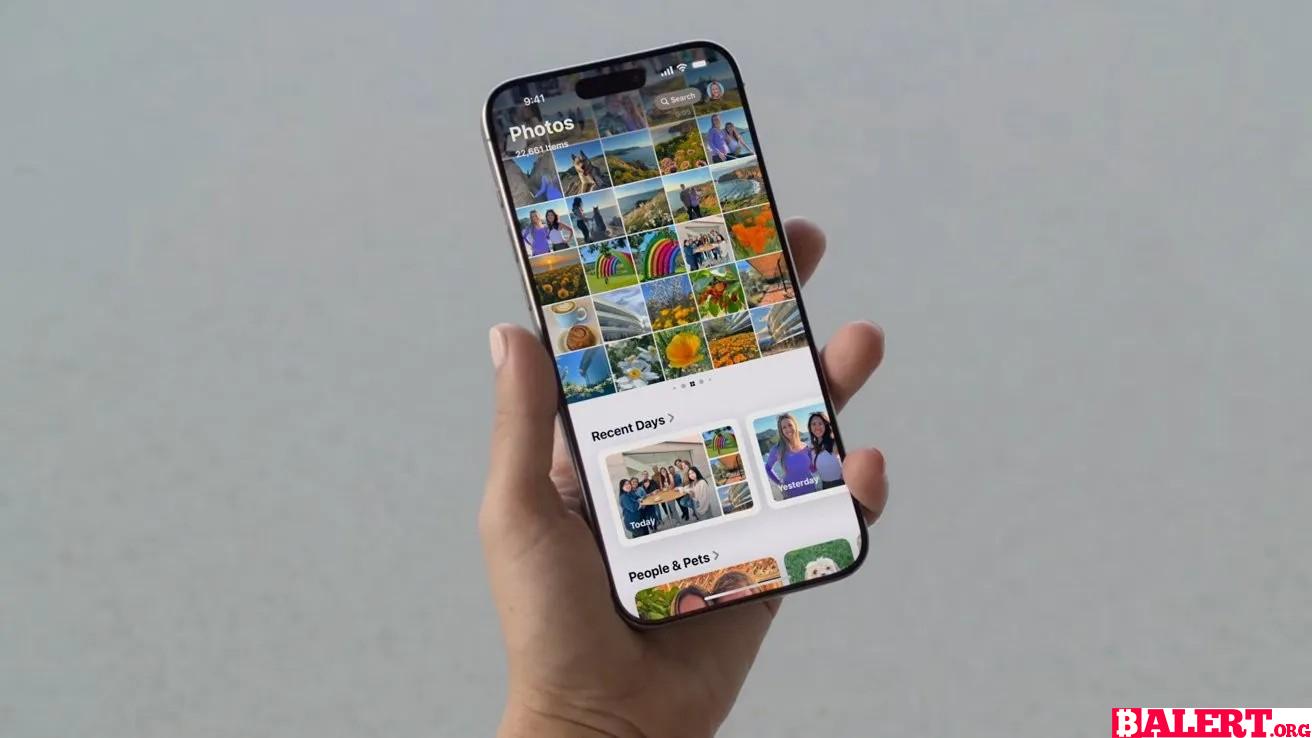
Apple officially launched iOS 18 yesterday, as promised. After a long beta testing phase, this update brings many exciting new features for iPhone users.

New Features in iOS 18
- Advanced Customization Options on the Home Screen: With iOS 18, users can now arrange app icons freely without sticking to the traditional grid layout. Additionally, there’s an option to change the colors of the icons and adjust their darkness levels. In short, you are no longer bound to a boring layout. It raises questions why Apple waited until 2024 to offer this feature.
- Revamped Control Center: The Control Center is completely redesigned in iOS 18. Users will be able to group controls more comfortably, and developers can easily add controls from their applications. Also, there’s an option to divide the Control Center into pages, allowing different controls on each page.
- RCS Messaging Support: With iOS 18, Apple introduces Rich Communication Services (RCS) messaging support. Users can add various effects to their texts and react with new emojis for more colorful responses.
- Updated Photos App: The Photos app is presented with a new opening page and a modern layout. Users can now browse photos by time, people, and many other criteria, reorder media files, and explore more with the “Collections” feature.
- App Lock Feature: Users can now lock specific applications. For example, they can activate Face ID protection from the menu that appears when long-pressing an app icon. Thus, anyone wanting to open the app will have to pass the Face ID protection first.
- Apple Intelligence: One of the important features of iOS 18 is Apple’s artificial intelligence kit, Apple Intelligence. However, to fully benefit from this feature, you’ll need to wait for the iOS 18.1 update. More information about Apple Intelligence can be found here.
How to Install iOS 18?
- Open the Settings app.
- Tap on General.
- Select Software Update.
- Your iPhone will notify you that the new iOS 18 update is available.
- Click on “Download and Install” and follow the on-screen instructions.
Which iPhone Models Can Install iOS 18?
- iPhone XR, XS, and XS Max
- iPhone 11
- iPhone 11 Pro and 11 Pro Max
- iPhone SE (2nd generation)
- iPhone 12 mini and iPhone 12
- iPhone 12 Pro and iPhone 12 Pro Max
- iPhone 13 mini and iPhone 13
- iPhone 13 Pro and iPhone 13 Pro Max
- iPhone SE (3rd generation)
- iPhone 14 and iPhone 14 Plus
- iPhone 14 Pro and iPhone 14 Pro Max
- iPhone 15 and iPhone 15 Plus
- iPhone 15 Pro and iPhone 15 Pro Max
- iPhone 16
- iPhone 16 Plus
- iPhone 16 Pro and iPhone 16 Pro Max
-

 Business7 months ago
Business7 months agoThe Significance of Jackson Hole: A Central Banking Tradition
-

 Tech6 months ago
Tech6 months agoNew Leaks and Features About the Samsung Galaxy S25 Ultra
-

 Article9 months ago
Article9 months agoCreative Design Applications Developed with Artificial Intelligence
-

 Business6 months ago
Business6 months agoBhutan’s Strategic Investment in Bitcoin: A New Era for the Himalayan Kingdom
-

 Business8 months ago
Business8 months agoObituary: Dan Collins
-

 World6 months ago
World6 months agoThierry Breton Resigns: Impact on European Union Leadership
-

 Gaming6 months ago
Gaming6 months agoNew Details and Trailer Released for Dead Rising Deluxe Remaster
-

 Gaming6 months ago
Gaming6 months agoNew Details for Alan Wake 2 and PlayStation 5 Pro Announcement



